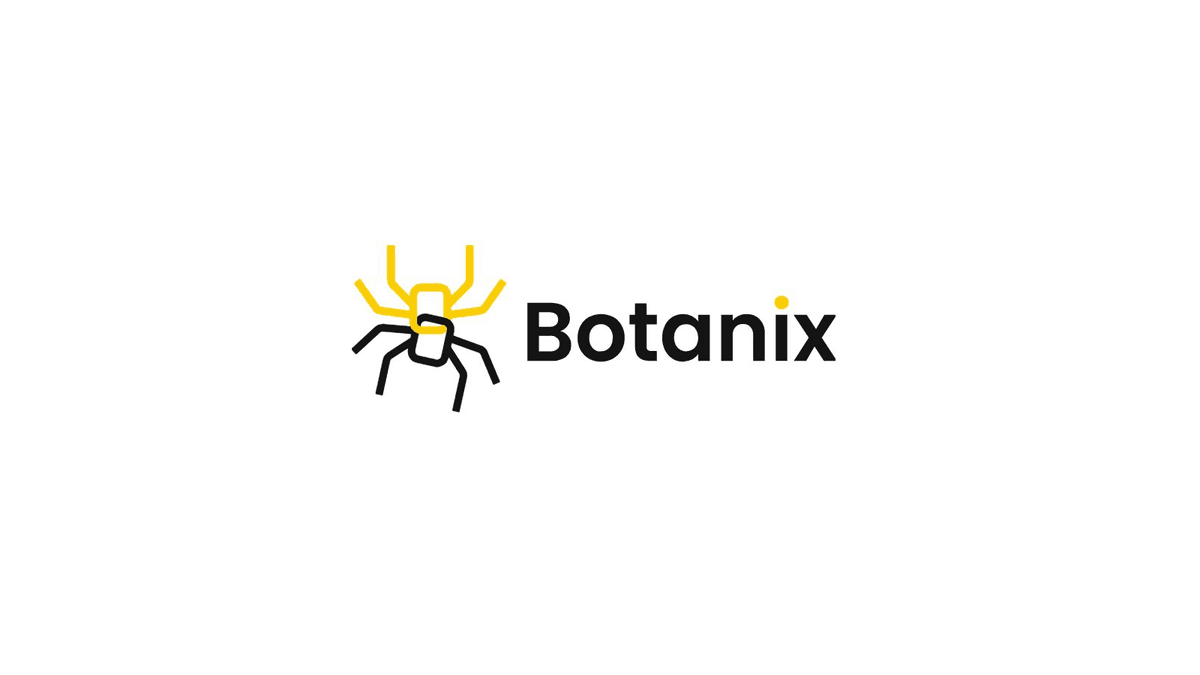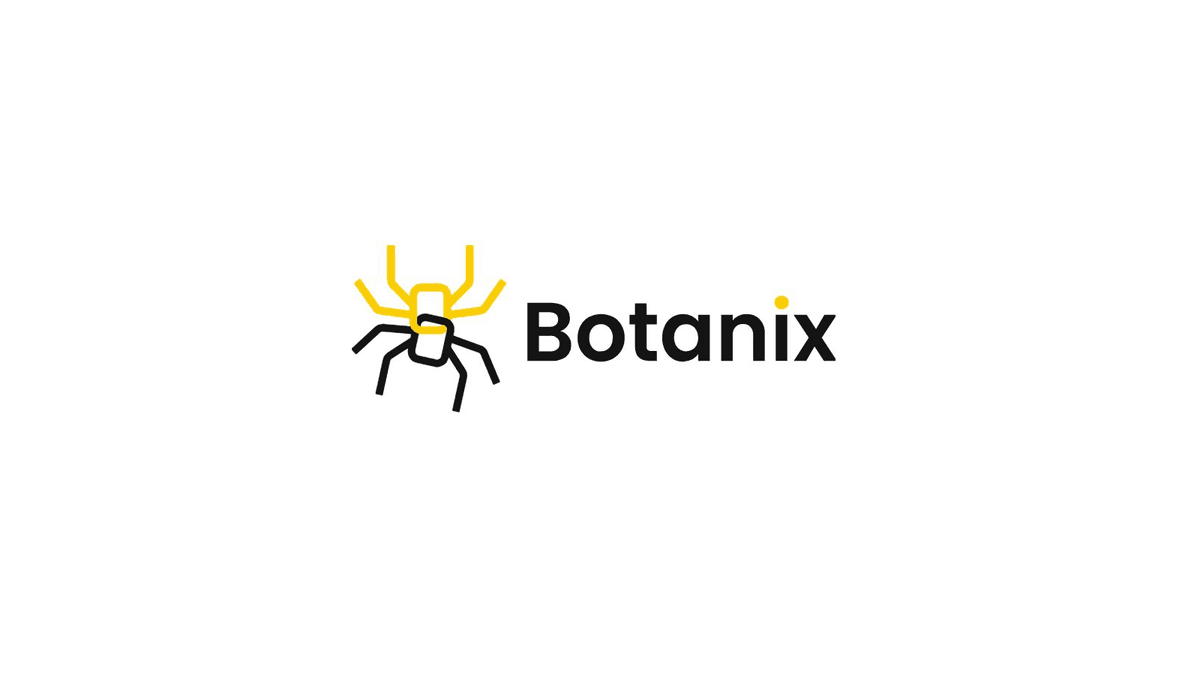Key Takeaways
- Spiderchain Layer 2: Spiderchain is an Ethereum-equivalent Layer 2 protocol operating on Bitcoin utilizing multisig wallets and validators to ensure security.
- Bitcoin-EVM integration: Spiderchain allows for seamless interaction between Bitcoin and Ethereum environments, enabling simple dApp migration when needed.
- Orchestrator nodes: Orchestrator nodes operating atop Spiderchain are responsible for maintaining network consensus, transaction validation, and Bitcoin liquidity transfer management.
- Forward security: Spiderchain’s forward security model helps ensure protocol resilience in the event of an attack, meaning previously secured BTC remains protected at all times.
- Two-way bridge: The two-way bridge developed by Botanix Labs helps facilitate BTC transfers between the Spiderchain and Bitcoin networks.
Introduction to Spiderchain’s Technical Architecture
The Spiderchain is an EVM equivalent Layer 2 operating on Bitcoin. The Botanix Labs mission is to create a fully decentralized architecture that allows developers to build a wide range of applications and independent protocols on the Spiderchain platform via Bitcoin.
Because Botanix Labs is heavily focused on decentralized finance (DeFi), some of these utilities include, decentralized exchanges (DEXs), restaking protocols, perpetuals DEXs, decentralized money markets (yield farming, lending, and borrowing etc.) and the like.
In order to realize the development of these iterations, the Spiderchain makes use of several main architectural components to realize its greater functionality as a network that exhibits EVM smart contract functionality along with its highly scalable Bitcoin-secured design. These include:
- Spiderchain the main blockchain responsible for increasing the verifiability of bitcoin (BTC) fund movement and staker collateral. As a set of interconnected multisig wallets on Bitcoin, Spiderchain is continuously adapting to ensure cryptographically verifiable forward security for all funds held on the platform.
- Bitcoin blockchain acts as a security-sharing platform for the Spiderchain by utilizing its extremely robust security guarantees. All nodes operational on the Spiderchain protocol also run a full node on Bitcoin.
- Spiderchain EVM - an EVM equivalent Solidity-focused virtual machine environment that takes the form of the Rust implementation of Ethereum (Reth). Spiderchain runs a full Ethereum Virtual Machine (EVM) execution client, meaning that from a developer standpoint, it is very similar to Ethereum itself.
- Orchestrator nodes - the main foundational nodes (validators) operating on the Spiderchain, Orchestrators contribute to network consensus and the overall integrity of the Spiderchain network. Their main role is to validate transactions and produce blocks on the network, while they are also responsible for enabling the transfer of BTC liquidity between Bitcoin and the Spiderchain. Orchestrators are also considered federation members (with 15 currently live on the Spiderchain testnetv1).
After learning about the technical architecture of the Spiderchain platform in this piece, if you’d like to better understand the history of the Botanix project and why it's important, feel free to have a look at our introductory blog post in this series.
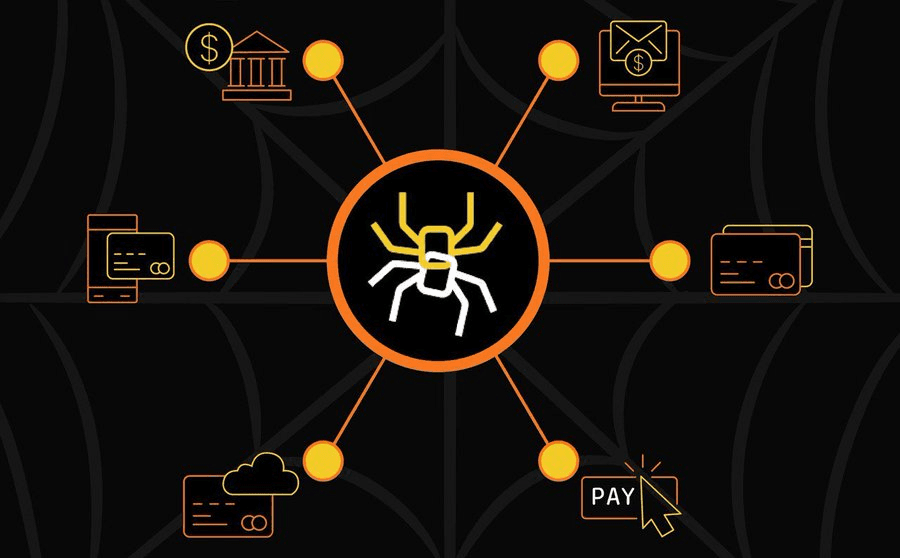
Spiderchain Explained
Robust security is the backbone of any decentralized computing network. Without security, any platform utilized to transact data and value on a large-scale becomes unusable. Therefore, security is critical to the verifiable integrity of the Spiderchain network.
Thankfully, Spiderchain is designed to uphold the most robust security guarantees possible. This ultra-secure model allows the protocol to hold user funds utilizing a specialized technology called forward security.
To ensure the network's security guarantees, Spiderchain is composed of a series of sequential multi-signature wallets between interconnected Orchestrator nodes. Spiderchain’s network of multisigs effectively constructs a framework designed to secure all user-deposited BTC on the protocol.
Because the network is always evolving, with new multisigs continuously being created with transfers sent to and from different wallets, Spiderchain can be thought of as a form of verifiable collateral entrenched within a decentralized multisig network.
The “Spiderchain” designation comes from the idea that each multisig wallet is a smaller leg that makes up part of the larger spider. Each Bitcoin block that makes up the protocol is associated with a new multisig created amongst an arbitrarily set of network participants that make up the larger Spiderchain network.
One of the main innovations that allows Spiderchain to operate as an Ethereum-equivalent Layer 2 harnessing Bitcoin security, is its ability to separate the bitcoin asset (i.e, BTC) from the Bitcoin blockchain itself.
This is achieved by securing the BTC present on the protocol, effectively allowing the Bitcoin network to be separated from the EVM environment. This design allows for the transition from Bitcoin’s UTXO model to Ethereum’s EVM account model.
In essence, the Spiderchain acts as an intermediary that allows the UTXO model to connect to the Ethereum account model, ensuring its Ethereum equivalence and smart contract functionality. Spiderchain makes use of the Ethereum account model, while still utilizing the robustness of Bitcoin itself.

Unboxing Spiderchain Forward Security
Spiderchain’s forward security infrastructure employs many of the same concepts popularized in traditional forward secrecy (sometimes also known as future security) cryptography schemes. This framework ensures that private keys are long term secure, a process that guarantees they are secured indefinitely moving forward.
Fundamentally, the construct behind forward security is to eliminate the possibility of a security breach in the event an attacker manages to acquire a cryptographic key at some point in the future. This ensures they'd be unable to decrypt past communications and transactions that were secured by that key prior to it being compromised.
Forward security is a critical mechanism used by most cryptographic protocols and related systems because of their susceptibility to having their long term key compromised. Should this take place, they could be vulnerable to the decryption of sensitive information, exposure of past transactions, and even the potential destruction of the security framework in its entirety.
Oftentimes forward security makes use of key rotation (a process that periodically changes the system’s cryptographic keys) and ephemeral keys (a process employing temporary keys generated for individual communication sessions or transactions) to strengthen the underlying protocol.
In a similar manner to how traditional encryption protocols are potentially vulnerable to long term key exposure, the BTC held on Spiderchain could be seized if an attacker gained majority control over the network.
Within each Bitcoin block, a new multisig is generated amongst 100 randomized Orchestrator nodes, meaning in time, the BTC on Spiderchain is distributed among several independent multisig wallets that were generated previously.
Therefore, even in the unlikely event an attacker is able to gain a two-thirds majority over the network, forward security guarantees that all underlying user-owned BTC remains securely locked within older more established multi-signature wallets. This ensures it is nearly impossible for an attacker to steal the BTC secured on the platform.
These extremely robust security guarantees are supported by multisig rotation (randomized multisig validator shuffling), liveness epochs (new consensus round validator key set generation), and LIFO management (by ensuring the oldest BTC is secured by the oldest validators on the network).
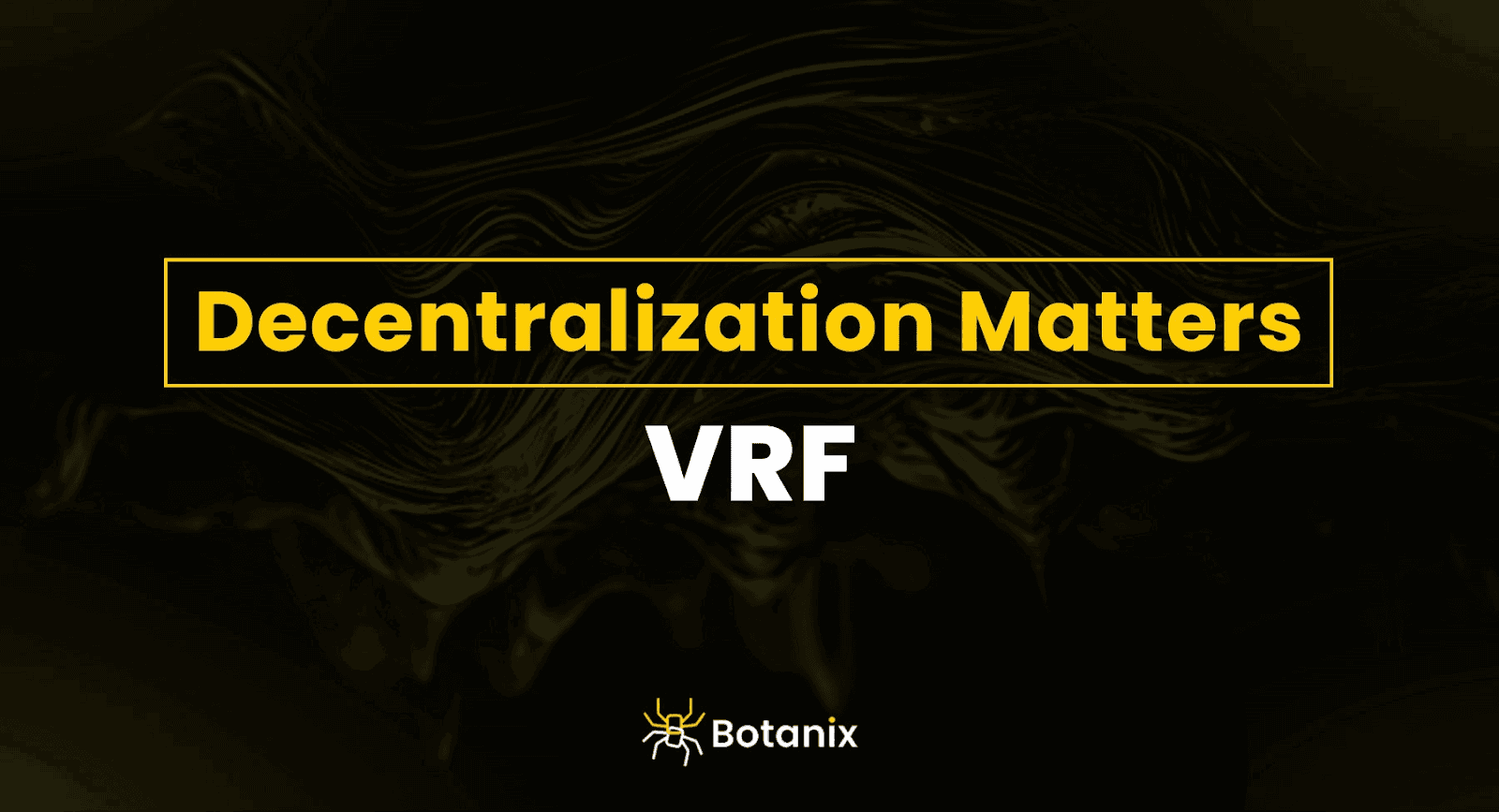
Botanix Security Design Parameters
In many ways, the security of Spiderchain is largely dependent on the Bitcoin network, specifically because of its Proof of Work (PoW)-focused security system. In the event Bitcoin’s security were to be compromised, it would negatively impact Spiderchain. For this reason, the Spiderchain network is heavily reliant on Bitcoin to ensure its own security.
More specifically, to combat the risks typical Proof of Stake (PoS) systems are susceptible to, Spiderchain leverages decentralization, randomized validator selection, and robust finality guarantees similar to Bitcoin and other PoW networks. Let’s explain:
Decentralization
When Proof of Stake chains launch, they are typically very centralized because of the way PoS networks are designed, with each validator needing to possess a significant amount of tokens prior to being accepted on the network (most networks have minimum requirements to launch a validator). Essentially, the larger the stake a validator holds, the more control they garner over the network over time.
To combat this, it is important for Proof of Stake chains to be as decentralized as possible from outset by offering mechanisms for smaller investors to contribute to the network. This is no simple task mind you, and many chains start off quite centralized and work their way to becoming more decentralized over time.
The initial token distribution of newly launched blockchain projects is also another important factor used to determine decentralization. When too many tokens are initially held in the hands of too few, it makes the chain and its underlying ecosystem centralized because the holders could potentially manipulate the direction of the project through governance.
Conversely, Proof of Work chains like Bitcoin have a decentralizing effect on their respective networks because they effectively distribute tokens into the real world (as opposed to closed PoS systems) through their network mining processes, making PoW models less vulnerable to concentration in the long run. Many would argue that Spiderchain is somewhat centralized because of its Proof of Stake design. However, the democratizing effect of Bitcoin’s Proof of Work model trump's this assertion.
Randomized Validator Selection
Generally, PoS chains make use of randomized validator selection to produce blocks on their respective networks, with the likelihood of being selected proportional to the amount of stake the validator holds. This randomized structure is designed to ensure the network is decentralized and impartial, allowing any potential participant the possibility of being selected as a validator.
That said, randomization can be an extremely difficult problem to solve because PoS networks are sometimes susceptible to validator manipulation. This often occurs because of validator collusion or because of the presence of an individual entity with a large stake trying to become a validator on the network.
To solve this issue, Spiderchain makes use of verifiable random function (VRF) technology by utilizing Bitcoin block hashes as a random number generation system. This allows Orchestrator node (validator) selection to be inherently more randomized and equitable than most traditional PoS systems.

Finality
Before we get into how Spiderchain achieves on-chain finality, let’s explain how PoW and PoS systems realize this goal.
In PoW frameworks, finality is generally achieved via the use of network confirmations, or the number of blocks that have been successfully added to the chain after a certain block. In essence, the more confirmations a block contains (i.e., the longest chain realized from the most CPU power), the more secure it is considered to be.
During consensus, PoS protocols must be able to guarantee that at a specific point a transaction cannot be changed at all, meaning it is considered final and irreversible. Block finality in Proof of Stake systems is achieved in a multitude of ways depending on the exact network type.
Regardless, on Ethereum specifically, the platform employs the Casper protocol to achieve finality. Casper implements a mechanism called “checkpoint” blocks, whereby the first block within each epoch (consensus round) is considered the checkpoint.
In this system, validators vote for pairs of checkpoints that it determines are valid, meaning that, if a pair of checkpoints attract votes worth at least two-thirds of the total staked ETH, the checkpoints are upgraded. As per the Ethereum documentation: “The more recent of the two (target) becomes "justified." The earlier of the two is already justified because it was the "target" in the previous epoch. Now it is upgraded to "finalized."
The Spiderchain protocol piggybacks finality from the Bitcoin network. Bitcoin achieves finality by possessing the longest chain with the most computing power. Therefore, many consider Bitcoin to be backed by energy. Because Spiderchain is inherently connected to Bitcoin, the network leverages Bitcoin’s finality guarantees.
More precisely, Spiderchain inherits probabilistic finality via Bitcoin to safeguard the network against long range attacks. This is accomplished when Orchestrators post the root hash of the most recent Merkle tree back to the Bitcoin base ledger. More accurately, within each Bitcoin block, the Orchestrator inscripts the Merle Tree root hash on Bitcoin.
Inscriptions are a mechanism that allows for the posting of arbitrary data to the Bitcoin network. Spiderchain uses the inscriptions framework to post the root hash to Bitcoin, meaning that once Bitcoin achieves finality, Spiderchain inherently achieves finality as well.

Understanding Orchestrator Nodes
Orchestrator nodes make up the larger system of independent computers (nodes) operating on Spiderchain responsible for ensuring the network and its underlying consensus mechanism operates as intended.
Orchestrator nodes are analogous to validators and are responsible for verifying the integrity of all transactions initiated on the Spiderchain network. In addition, Orchestrator nodes provide liquidity on both the Bitcoin and Spiderchain side.
In the event users bridge bitcoin to the Spiderchain EVM, the actual bitcoin resides safely within multisig wallets interconnected between Orchestrators. Orchestrator nodes help make up the Spiderchain framework and are the single entity responsible for block creation and are also tasked with minting (creating) and burning (destroying) BTC on the Spiderchain EVM.
It is possible for any user to run an Orchestrator node provided they allocate the minimum staking requirement. In the event an Orchestrator is determined to be acting maliciously within the network, their BTC stake is slashed (penalized) and they lose part of or their entire stake.
Spiderchain’s security framework generally follows the Proof of Stake model and the network itself uses a Proof of Authority (PoA) consensus mechanism. This means that as long as the number of potential collaborative adversarial actors (i.e., malicious Orchestrators) is overwhelmed by honest Orchestrators with a 2/3rd’s majority, the security of the network is mathematically guaranteed.
For every newly appended Bitcoin block, a new multi-signature wallet is created, while Orchestrators are randomly selected from the larger decentralized network of Orchestors from locations across the globe.
Spiderchain BTC Settlement
One of the main purposes of the Spiderchain protocol is to support the architectural integrity of the platform via Bitcoin security guarantees, while also ensuring that ability for BTC holders to hold and withdraw their assets as needed.
Spiderchain achieves this goal by making use of a two-way bridge and a federation of interconnected Orchestrators (validators) that are designed to ensure the operational integrity of the Spiderchain network.
More specifically, to allow for the seamless transfer of funds via the peg-in/peg-out process, the Spiderchain bridging framework employs the use of: 1.) the Spiderchain EVM environment 2.) the Bitcoin blockchain, and 3.) the Spiderchain protocol. Let’s explain:
Because the Bitcoin network acts as a security-sharing platform for the Spiderchain protocol by harnessing its robust security guarantees, all nodes operating on the Spiderchain simultaneously run a full node on Bitcoin. This allows users to send BTC to a specific single-use multi-signature wallet on the protocol, in return allowing them to receive the same amount of BTC on Spiderchain. This means that once a user sends BTC on Spiderchain, they are able to redeem it on the parent chain.
The Spiderchain EVM is a Ethereum-equivalent virtual machine environment operating on the Spiderchain network as a Rust implementation of Ethereum (Reth). Because of its Ethereum equivalency, the Spiderchain EVM supports Solidity smart contacts initially conceptualized on Ethereum, greatly simplifying application development for Ethereum developers wishing to port their applications from Ethereum to Spiderchain and vice versa.
Moreover, Spiderchain is the protocol responsible for increasing the verifiability of bitcoin staker collateral and asset movement on the network. Because Spiderchain is a set of interconnected multi-signature wallets operating on Bitcoin, the platform is constantly adapting to ensure cryptographically verifiable forward security for all funds held on the network. Thankfully, Spiderchain makes it almost impossible for malicious actors to steal user funds.
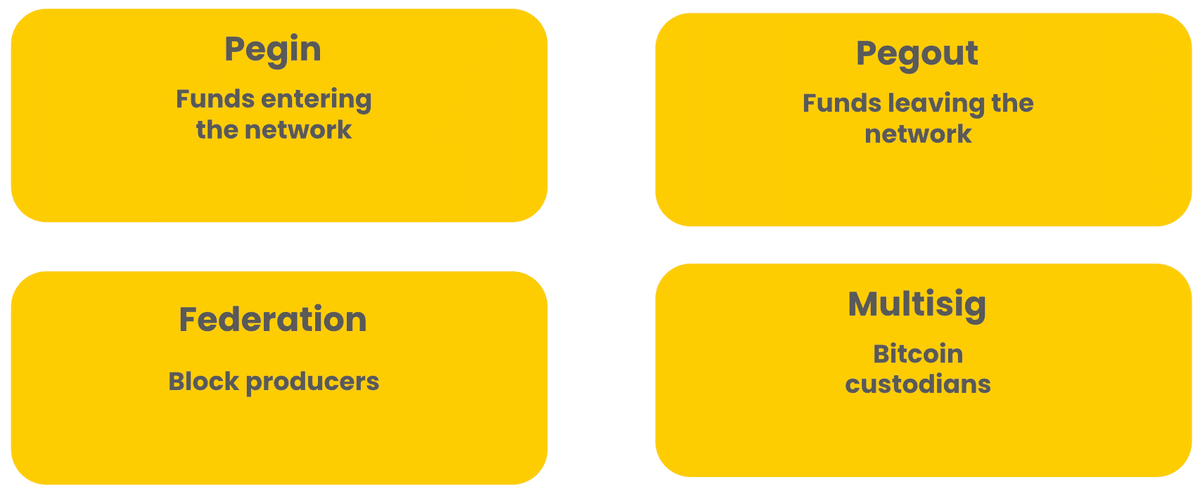
The Botanix Federation plays a pivotal role in the peg-in/peg-out process that allows for the interoperability of the BTC asset between both networks. The federation is essentially a validator set of interconnected nodes (Orchestrators) tasked with ensuring the operational efficiency of the Spiderchain blockchain. It also underpins the Spiderchain protocol and helps ensure the integrity of the platform to facilitate the transfer of BTC to and from Spiderchain. More distinctly, the Botanix Federation is made up of the following elements:
- Peg-in (capital entering the network) - this mechanism allows users to transfer assets from the Bitcoin parent chain to the Botanix-built L2. For this process to occur, Spiderchain leverages an internal taproot key to encode the Layer 2 address where the funds should be directed. This generates a Bitcoin taproot address, enabling users to send funds to their address should the need arise. After confirmation, a peg-in proof is generated to verify that the funds have indeed been sent successfully.
- Peg-out (capital leaving the network) allows for the transfer of BTC from the Spiderchain to the Bitcoin parent chain. During the peg-out process, a user provides a bitcoin address and selects the amount of BTC they would like to withdraw. Next, Spiderchain nodes collectively aggregate a quorum of signatures (nodes agree on the transaction's legitimacy) and release the requested funds.
- Federation (block producers) - an ecosystem that currently includes 15 validator members (on v1), who are largely tasked with verifying pegins and pegouts, while also being responsible for ensuring the integrity of block production on Spiderchain’s Proof of Authority consensus. The v1 federation harnesses a round-robin block selection mechanism similar to the clique specification (a PoA consensus protocol similar to Ethereum). At this time, anyone is allowed to join the network, but new members will not initially be part of the federation responsible for block production. In time, the Spiderchain protocol will become fully permissionless and decentralized.
- Multisig (bitcoin wallet custodians) a threshold signature scheme (called FROST) that utilizes Schnorr signatures and other specialized technology to secure multisig wallets on the Spiderchain protocol (by splitting cryptographic keys into the correct format to generate a valid signature with the correct verification key). Flexible Round-Optimized Schnorr Threshold Signatures (FROST) is designed to improve participant communication in Schnorr signature schemes, therefore reducing network bandwidth, time, and the probability of error; therefore preserving blockspace and increasing privacy.
Resources
The information provided by DAIC, including but not limited to research, analysis, data, or other content, is offered solely for informational purposes and does not constitute investment advice, financial advice, trading advice, or any other type of advice. DAIC does not recommend the purchase, sale, or holding of any cryptocurrency or other investment.

